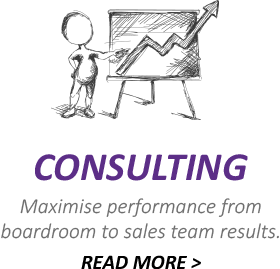Can you show me your sales process?
Often when you ask sales managers this question they give you some sort of verbal description. They explain how their leads are produced, followed up by the sales team and orders managed.
However, ask them to provide a diagram of the process and you often get a blank look, it doesn’t exist.
Without an accurate visual there is no way to fully understand the process, making it difficult to explain to staff. It also leads to an even bigger issue, in the words of Lord Calvin, “If you can’t measure it, can’t improve it.”
So, your sales process must be properly mapped out to enable you to measure it and improve it.
This will involve investing some time, mapping out each of the steps and several departments will usually need to be consulted.
So why bother?
The fastest way to increase your sales is to improve your sales process.
If you can speed up the time it takes for a sales opportunity to pass through your system the more time you will have to dedicate to new sales opportunities, creating additional sales.
Simply put, you’ll be working smarter not harder with improved results.
Senior management often feel they do have a good understanding of the process and may be tempted to complete it themselves. But perception and reality can vary wildly. A company’s sales process tends to evolve unconsciously over time with different staff being involved and new activities being introduced. That’s why it’s a smart idea to involve the people actually doing the daily workload to be part of the mapping process.
Managers are often surprised to find that in reality people are duplicating actions or they have developed ‘work arounds’ because the current I.T infrastructure isn’t supporting them properly.
Let me share with you a recent example. Last year I worked with a large and well-established organisation that were looking to purchase a new CRM system. They had the foresight to map out their sales process prior to approaching vendors with their requirements.
What did this analysis reveal?
Firstly, they found gaps in the information being shared between departments. This was causing duplicative work and poor communication. Secondly, they significantly reduced the time to process membership applications by eliminating redundant steps in the approval process. This improved the onboarding experience for new members and greatly reduced the involvement and time required from senior management.
The CRM company selected for the project commended them for the quality of their sales process maps. They commented that they wished every client would perform this task as it had saved a significant amount of time and eliminated the potential for mistakes during the development and implementation process.
It is possible to complete this sales process mapping internally. However, there is a distinct advantage in having an independent person assist. They provide a more objective perspective, being unbiased they can push back on any assumptions and challenge the established ways of working to reveal the reality of the situation.
Once you have mapped out all the steps accurately and validated them with your departments, there is one more step worth taking.
Ask your customers what they think of your process. Are you easy to deal with?
You might find the process works really well for you but there are a few areas you could improve to make it a superb experience for your customers!
Without a ‘Sales Process Map’ you’re in the dark and making improvements at best will be guesswork.
However, once you have it in place, it’s like a blueprint you can use continually to review, adapt and improve performance.
Ultimately, you will have gained an in-depth understanding of how you deliver value to your customers, and that’s an investment worth making!
If you’d like some more input or examples of how you can map your own process effectively please drop me an email at peter.holland@linearstructure.com and I’ll be happy to share some additional resources.
©2020 Peter Holland






